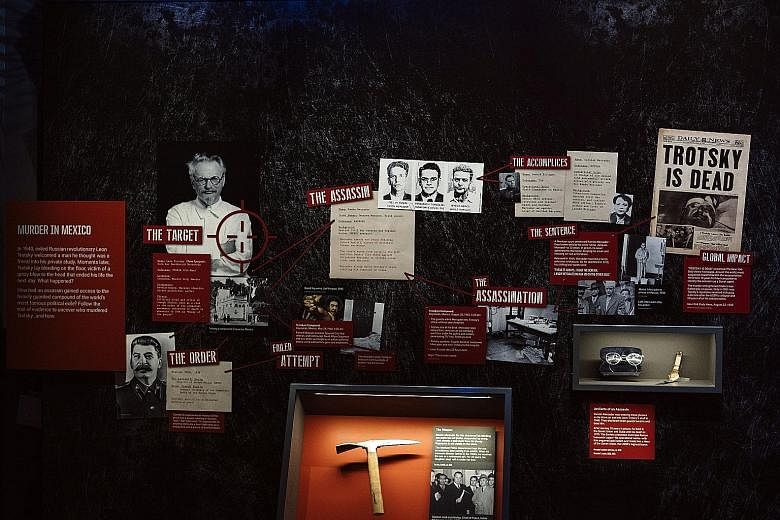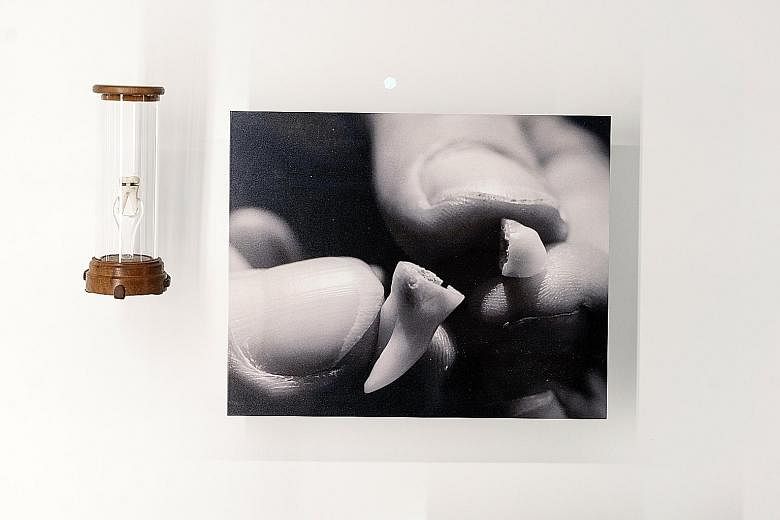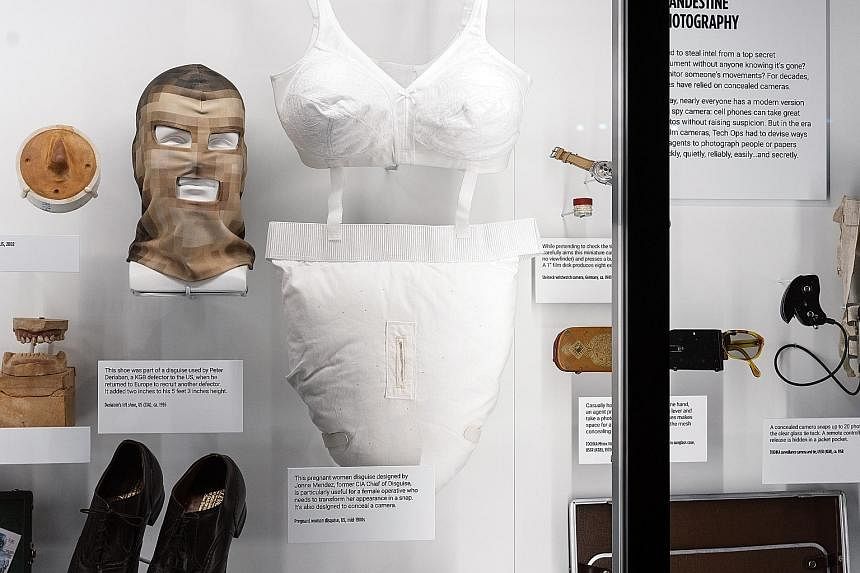WASHINGTON • The intelligence craft in American history and culture is a decidedly mixed bag.
It has served up intrigue, genius and heroism, clever undercover operations and brain-boggling gadgetry, making it a linchpin of popular entertainment.
Yet, the spy trade also has a darker strain: Prone to epic failures and frequently in ethical trouble, the American agencies have been embroiled in recent years in scandals involving brutal torture and secret surveillance.
The challenge taken on by the new, vastly expanded International Spy Museum, opening on Sunday in a striking glass-and-steel building not far from the National Mall, was to capture all of these disparate threads.
The curators had to appeal to rambunctious eight-year-olds along with sombre retirees, tourists whose notion of intelligence comes from James Bond movies and, given its location, hypercritical visitors from the ranks of the Central Intelligence Agency (CIA), the National Security Agency (NSA) and all the secret crannies of the security state.
Overall, the new museum, built for US$162 million (S$221 million) from private donations and a municipal bond, does a remarkable job.
It is more serious and realistic than the original Spy Museum, located 1.6km away and founded by the same man who financed most of the new museum, Mr Milton Maltz, a television and radio entrepreneur.
During its run from 2002 to last year, the old museum became a popular gathering place for authors and speakers on spying, but some of the displays came across as slick and superficial.
The new exhibits use every technological trick in the modern-museum book to engage visitors.
But they also are designed to present complex subjects in ways that encourage thoughtful consideration and debate.
The museum is rich with historical artefacts, interactive quizzes and original short films.
Most impressively, the new museum faces squarely the most painful and divisive episodes in the recent history of American spying.
A room devoted to interrogation and torture features some history (first president George Washington took a stand against the mistreatment of British prisoners) and an actual waterboard - the notorious torture device used in the Inquisition by the Pol Pot regime in Cambodia and by the CIA against Al-Qaeda suspects in 2002 and 2003.
In another room, devoted to secrecy and openness, among those who speak in extensive footage are Mr Thomas Drake, a former NSA official prosecuted for leaking to the press about a wasteful, failed programme; and Mr Ben Wizner, an American Civil Liberties Union lawyer who advises Mr Edward Snowden, the NSA contractor who gave journalists hundreds of thousands of secret documents.
Senior intelligence officials also get their say, but they do not monopolise the discussion.
The museum also takes a forthright look at intelligence failures, dissecting the catastrophically mistaken estimates about weapons of mass destruction in Iraq, as well as pairing the Pearl Harbour attack in 1941 and the Sept 11 attacks in 2001, in illuminating ways.
A creepy set of rooms depicts East Berlin as a surveillance society gone out of control.
"Here, we cover the dark side," said Ms Anna Slafer, the museum's vice-president of exhibitions and programmes.
Of course, if the old museum was "spy-lite", this one is not by any means heavy.
There are hundreds of items from the unrivalled spy-artefact collection of intelligence historian H. Keith Melton, who has advised the CIA on historical matters and donated his findings to the museum.
There is a Soviet camera hidden in a spectacles case, an East German microdot message in a hollow tooth, a fake-pregnancy suit for female CIA spies and a fake scrotum concealing a transmitter for the men. There are excursions into the huge place of spying in popular culture, but fictional stories are not allowed to predominate.
Dr Alexis Albion, the lead curator who worked on the 9/11 Commission staff and at the United States Department of State, said after consulting a panel of historians beginning about five years ago, designers decided "to tell fewer stories, but in more depth".
"You don't want to be pedantic, but you do want people to understand what this work is like," Dr Albion said. "People think spying is sexy and fun. But sometimes, it ends badly. We always thought it would be wonderful if some people came out of the exhibits and said, 'I couldn't do that. '"
At about two dozen interactive displays, each visitor, identified by an electronic identification card worn on a lanyard, can test his skills at spycraft.
At the end of the tour - about 21/2 hours on average - visitors get a report card on their aptitude for various intelligence specialities.
They can follow up on a website for a more detailed "debrief."
The museum seeks to serve all visitors and stake its claim to becoming a must-stop attraction for the hordes of tourists who land in Washington every year.
NYTIMES



